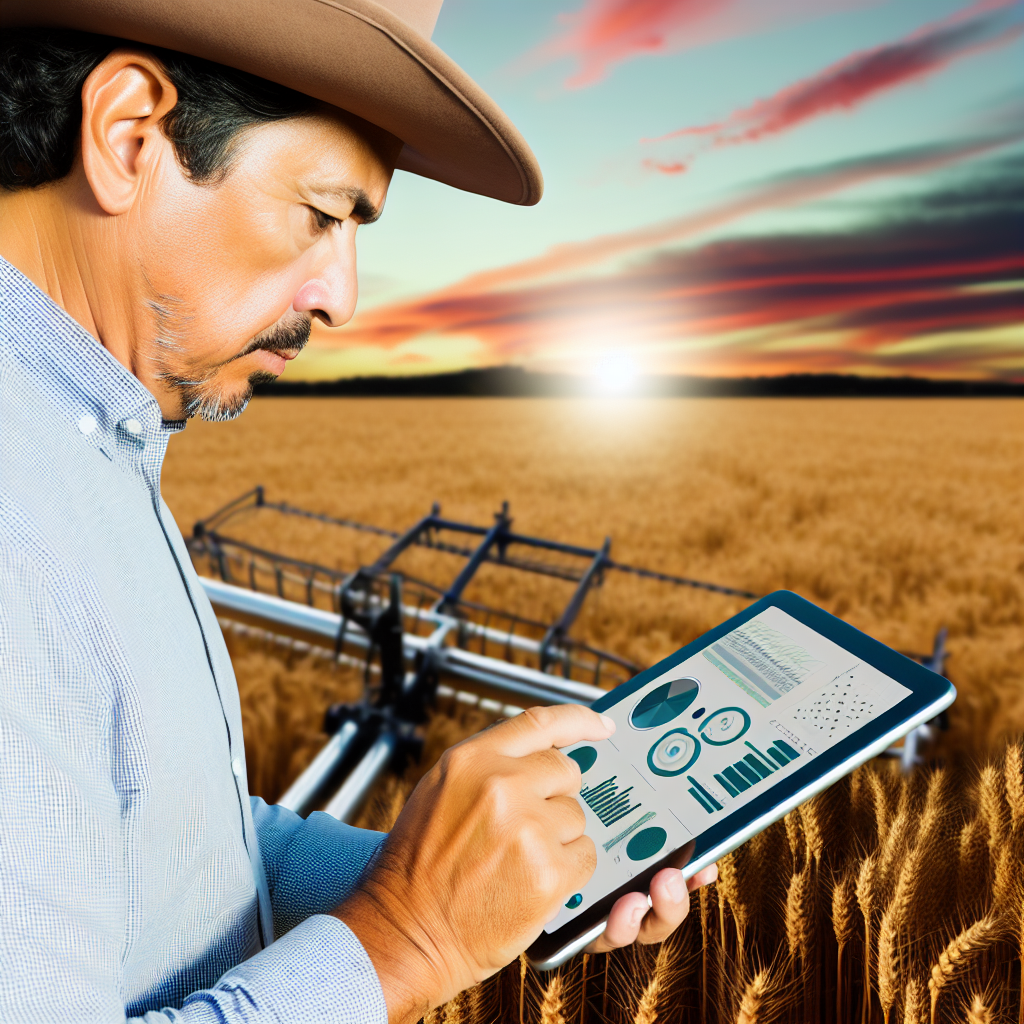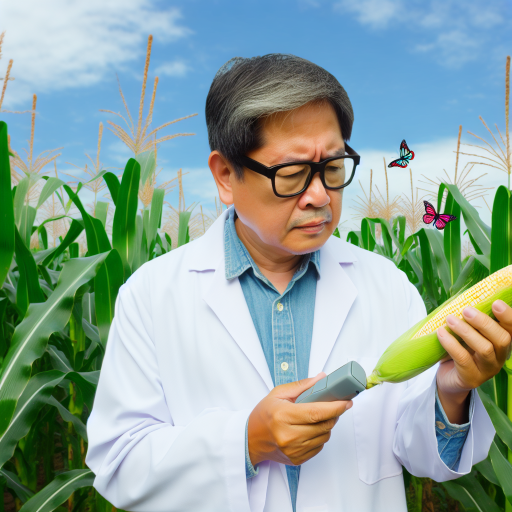Introduction:
Agricultural economics plays a crucial role in the agriculture sector.
It analyzes and improves farming practices.
Agricultural economists utilize various tools and technologies.
They collect and analyze data for informed decision-making.
Data Collection Methods
The field of agricultural economics heavily relies on the collection of data to make informed decisions and shape policies.
There are several methods used by agricultural economists to collect data, each with its strengths and weaknesses.
Surveys
- One of the most common methods used is surveys, where researchers ask a set of questions to a sample of individuals or households.
- Surveys can be conducted through phone calls, online forms, or in-person interviews, depending on the population being studied.
- Surveys help gather quantitative data on various aspects of agriculture, such as farming practices, input usage, and income levels.
- Researchers must ensure the survey questions are well-designed to avoid bias and obtain accurate responses from participants.
Interviews
- Interviews involve in-depth conversations with individuals or groups to gather qualitative insights on their experiences and perspectives.
- Agricultural economists conduct interviews with farmers, policymakers, and other stakeholders to understand their decision-making processes.
- Interviews provide valuable context to the data collected through surveys and help researchers develop a deep understanding of the issues at hand.
- Researchers need strong communication skills to conduct interviews effectively and extract meaningful information from participants.
Field Experiments
- Field experiments involve testing hypotheses or interventions in real-world agricultural settings to gather empirical evidence.
- Researchers may conduct randomized control trials (RCTs) or quasi-experiments to assess the impact of new technologies or policies.
- Field experiments allow researchers to measure causality, as they can control for external factors that may influence outcomes.
- Conducting field experiments requires careful planning, ethical considerations, and data collection protocols to ensure the validity of results.
Importance of Accurate Data Collection
Accurate data collection is crucial for agricultural economists as it forms the foundation for their analyses and policy recommendations.
Without reliable data, decisions made in agriculture may be based on false assumptions or incomplete information, leading to suboptimal outcomes.
Here are some reasons why accurate data collection is essential for making informed decisions in agriculture:
- Evidence-based Policies: Accurate data allows policymakers to design evidence-based policies that address the real needs of farmers and improve agricultural productivity.
- Risk Management: Farmers rely on accurate data to assess risks associated with crop yields, market prices, and climate variability, enabling them to make informed decisions.
- Resource Allocation: Governments, NGOs, and private organizations use accurate data to allocate resources efficiently and effectively in agriculture programs and projects.
- Market Analysis: Accurate data on supply, demand, and prices help agricultural economists analyze market trends, forecast future developments, and guide stakeholders in decision-making.
- Sustainable Development: Accurate data collection is essential for monitoring progress towards sustainable development goals in agriculture, such as reducing poverty, promoting food security, and mitigating climate change.
Data collection methods play a crucial role in the work of agricultural economists, enabling them to gather reliable information, analyze complex issues, and make evidence-based recommendations to improve the agricultural sector.
By using a combination of surveys, interviews, and field experiments, agricultural economists can paint a comprehensive picture of the challenges and opportunities facing farmers and policymakers, ultimately contributing to the sustainable development of agriculture.
Economic modeling:
Agricultural economists use economic models to simulate and predict the impact of various factors on agricultural outcomes.
Economic modeling is significant in analyzing the efficiency and sustainability of agricultural practices.
Economic modeling is a vital tool used by agricultural economists to simulate and predict the impact of various factors on agricultural outcomes.
By utilizing economic models, agricultural economists can assess the effects of changes in input costs, commodity prices, government policies, and environmental factors on the overall performance of agricultural systems.
These models help in forecasting crop yields, livestock production, and overall farm profitability based on different scenarios.
By analyzing the data within these models, agricultural economists can make informed decisions regarding resource allocation, risk management, and strategic planning in the agricultural sector.
One of the key advantages of economic modeling is its ability to provide a structured framework for evaluating the efficiency and sustainability of agricultural practices.
Through these models, economists can assess the economic viability of different farming methods, technologies, and policies to determine which options are most effective in maximizing productivity while minimizing negative environmental impacts.
Economic modeling also plays a crucial role in policy analysis and development within the agricultural sector.
Transform Your Career Today
Unlock a personalized career strategy that drives real results. Get tailored advice and a roadmap designed just for you.
Start NowBy using these models, economists can evaluate the potential outcomes of different policy interventions, such as subsidies, regulations, or trade agreements, on farmers, consumers, and the overall economy.
Additionally, economic models help in identifying potential risks and uncertainties that may affect agricultural markets and production systems.
By incorporating risk analysis into their models, agricultural economists can develop strategies to mitigate the impact of adverse events, such as droughts, pests, or market fluctuations, on agricultural output and profitability.
Economic modeling is a powerful tool that enables agricultural economists to simulate, predict, and analyze the impact of various factors on agricultural outcomes.
By harnessing the capabilities of these models, economists can make informed decisions that promote the efficiency, sustainability, and resilience of agricultural systems in a constantly changing and challenging environment.
Uncover the Details: Preparing for a Career in Agricultural Entomology
Statistical analysis:
Statistical analysis is a crucial aspect of agricultural economics.
It enables economists to make sense of the vast amounts of data that are collected in the field.
Here are some of the various statistical techniques used by agricultural economists to analyze data and draw conclusions:
- Descriptive statistics: This technique is used to summarize and describe the main features of a dataset, such as mean, median, mode, and standard deviation.
- Inferential statistics: This technique is used to make predictions or inferences about a population based on a sample of data.
- Regression analysis: This technique is used to identify the relationship between one or more independent variables and a dependent variable.
- Time series analysis: This technique is used to analyze data collected over time to identify trends and patterns.
- Correlation analysis: This technique is used to determine the degree to which two or more variables are related to each other.
Role of statistical analysis:
Statistical analysis plays a crucial role in identifying trends, patterns, and correlations in agricultural data.
By using the techniques mentioned above, agricultural economists are able to:
- Identify trends: Statistical analysis helps economists identify long-term trends in agricultural markets, production, and prices.
- Detect patterns: By analyzing data using statistical techniques, economists can detect recurring patterns in agricultural activities and behaviors.
- Establish correlations: Statistical analysis enables economists to establish correlations between different variables, such as weather patterns and crop yields.
- Inform decision-making: The insights gained from statistical analysis help agricultural economists make informed decisions about policies, investments, and strategies.
- Predict future outcomes: By analyzing historical data and trends, economists can make predictions about future outcomes in the agricultural sector.
Statistical analysis is a powerful tool used by agricultural economists to analyze data, identify trends, patterns, and correlations.
It helps them make informed decisions about the future of agriculture.
This analysis is an essential component of modern agricultural economics and is vital in shaping the future of the industry.
Find Out More: Extension Agents and Precision Agriculture
Geographic Information Systems (GIS):
Agricultural economists utilize GIS to map, analyze, and visualize spatial data related to agriculture.
GIS is crucial in understanding geographical factors affecting agricultural productivity and sustainability.
- GIS helps in visualizing important data for decision-making.
- GIS tools enhance the analysis of land use and crop patterns.
- Utilizing GIS improves resource management in agriculture.
Find Out More: Biotechnology Specialist Salary and Job Outlook
One of the cutting-edge tools used by agricultural economists is the utilization of drones and satellite imagery.
These technologies are revolutionizing data collection methods in agriculture.
Transform Your Career Today
Unlock a personalized career strategy that drives real results. Get tailored advice and a roadmap designed just for you.
Start NowThey provide real-time information on various aspects such as crop health, soil quality, and land use.
Drones:
- Drones equipped with cameras can capture high-resolution images of farms from above.
- This imagery can be used to evaluate crop condition, detect diseases, and assess field drainage.
- By analyzing the data collected by drones, economists can make informed decisions regarding crop management.
Satellite Imagery:
- Satellites orbiting the Earth provide a bird’s eye view of vast agricultural areas.
- This data can monitor crop growth, detect pest infestations, and assess environmental impacts on farms.
- With the use of satellite imagery, economists can track changes in land use patterns and make projections for future needs.
Drones and satellite imagery enable agricultural economists to enhance their monitoring capabilities.
They can make timely interventions for improved efficiency.
These technologies play a crucial role in ensuring sustainable agricultural practices.
They also maximize productivity in the field.
Agricultural economists leverage the power of drones and satellite imagery to improve decision-making processes.
They drive positive outcomes in the farming sector.
Find Out More: Entomologists in Government Agencies: Roles and Duties

Farm Management Software and Agricultural Economists
Farm management software plays a crucial role in aiding agricultural economists in planning, monitoring, and evaluating farm operations.
Tracking Expenses
- These tools allow economists to keep track of all expenses incurred during the farming process.
- They provide a detailed breakdown of costs, helping economists make informed financial decisions.
- By analyzing expense data, economists can identify areas where cost-saving measures can be implemented.
Optimizing Resource Allocation
- Farm management software helps in allocating resources efficiently based on data-driven insights.
- Economists can analyze resource usage trends and make adjustments for optimal farm operation.
- By identifying underutilized resources, economists can reallocate them to more productive areas.
Maximizing Yields
- These tools enable economists to monitor crop growth and health, leading to higher yields.
- By analyzing yield data, economists can make informed decisions to improve crop productivity.
- They provide real-time updates on crop performance, allowing for timely interventions to maximize yields.
Farm management software plays a vital role in helping agricultural economists effectively manage farm operations.
This is achieved by tracking expenses, optimizing resource allocation, and maximizing yields.
Importance of Cost-Benefit Analysis Tools:
Help in evaluating the potential risks and benefits associated with different agricultural decisions.
Provide a structured framework for comparing costs and benefits of alternative options.
Enable decision-makers to make informed choices based on economic criteria.
Assist in determining the financial feasibility of agricultural investments.
Allow for the quantification of both tangible and intangible costs and benefits.
- Help in identifying the most cost-effective agricultural projects and policies.
- Support the allocation of resources towards projects with the highest net benefits.
- Enable the prioritization of investments based on their potential returns.
- Provide a basis for justifying agricultural policy decisions to stakeholders.
- Facilitate better communication and transparency in decision-making processes.
Cost-benefit analysis tools play a crucial role in assisting agricultural economists in evaluating the economic viability of different agricultural projects and policies.
By utilizing these tools, economists can make more informed decisions that maximize benefits and minimize costs, ultimately leading to sustainable agricultural development.
Tools and Technologies in Agricultural Economics
Agricultural economists use various tools to analyze and improve practices.
These tools include data analytics software, GIS technology, and predictive modeling.
Transform Your Career Today
Unlock a personalized career strategy that drives real results. Get tailored advice and a roadmap designed just for you.
Start NowThese economists leverage technology to make informed decisions about crop yields.
They also analyze market trends and manage resource allocation effectively.
By utilizing these tools, agricultural economists optimize production processes.
This optimization helps minimize waste and improves profitability for farmers.
Advanced technologies promote sustainable practices in agriculture significantly.
They help identify areas requiring improvement and innovation in agriculture.
Adopting these tools enhances resource management and reduces environmental impact.
This also increases resilience against external factors like climate change.
The use of advanced tools is crucial for shaping the future of agriculture.
By harnessing data and analytics, economists provide valuable insights to farmers.
These insights aid policymakers and stakeholders in driving positive changes.
Leveraging these tools allows for informed decisions and enhanced productivity.
Additionally, they foster sustainability in agricultural practices globally.
It is vital for agricultural economists to embrace these technologies now.
This will help overcome challenges and achieve long-term success in agriculture.
Additional Resources
Precision Agriculture: Benefits and Challenges for Technology …
[E-Books for Sale]
The Big Book of 500 High-Paying Jobs in America: Unlock Your Earning Potential
$19.99 • 500 High-Paying Jobs • 330 pages
Explore 500 high-paying jobs in America and learn how to boost your career, earn more, and achieve success!
See All 500 High-Paying Jobs of this E-Book
1001 Professions Without a Degree: High-Paying American Jobs You Can Start Now
$19.99 • 1001 Professions Without a Degree • 174 pages
Discover 1001 high-paying jobs without a degree! Unlock career tips, skills, and success strategies for just $19.99!




